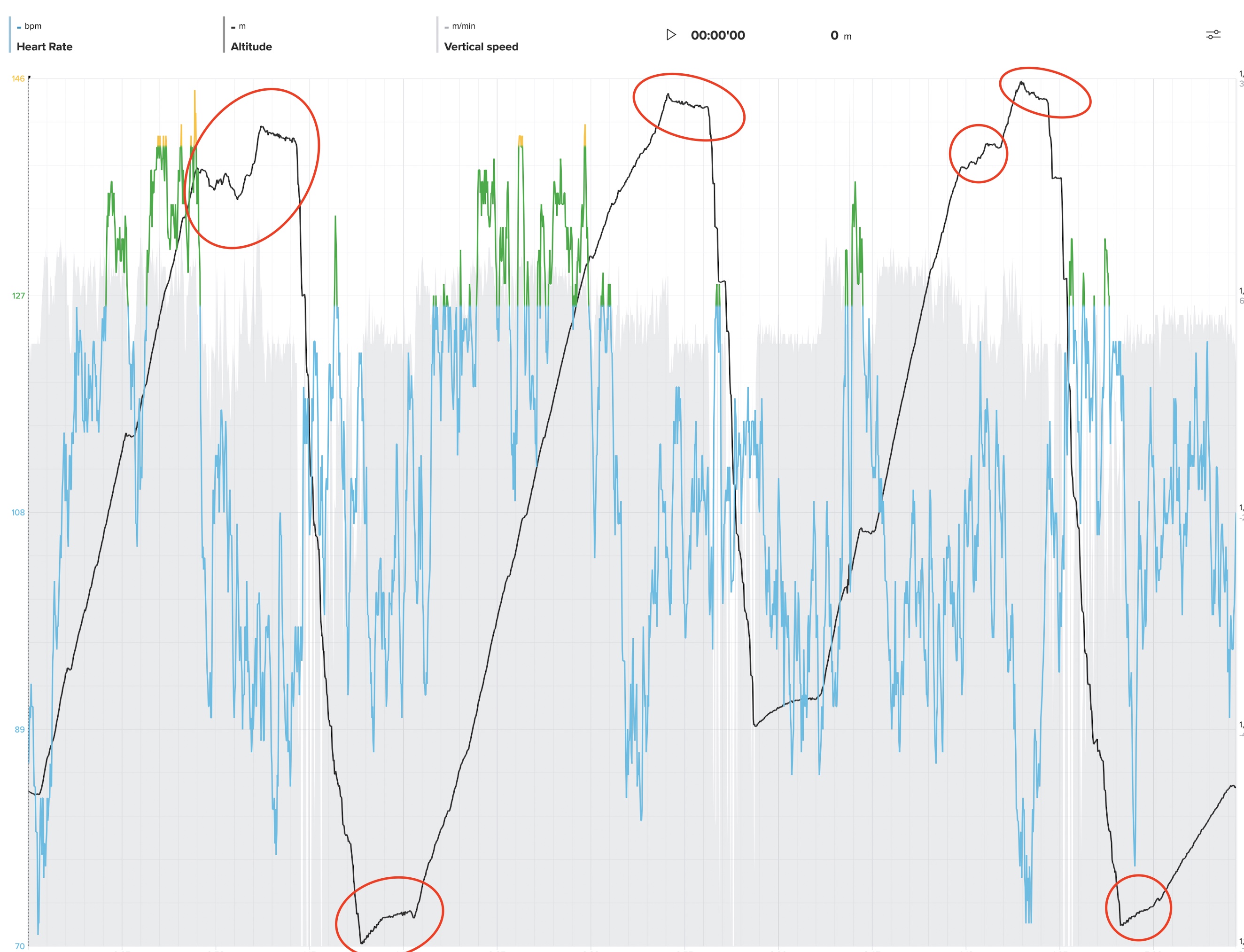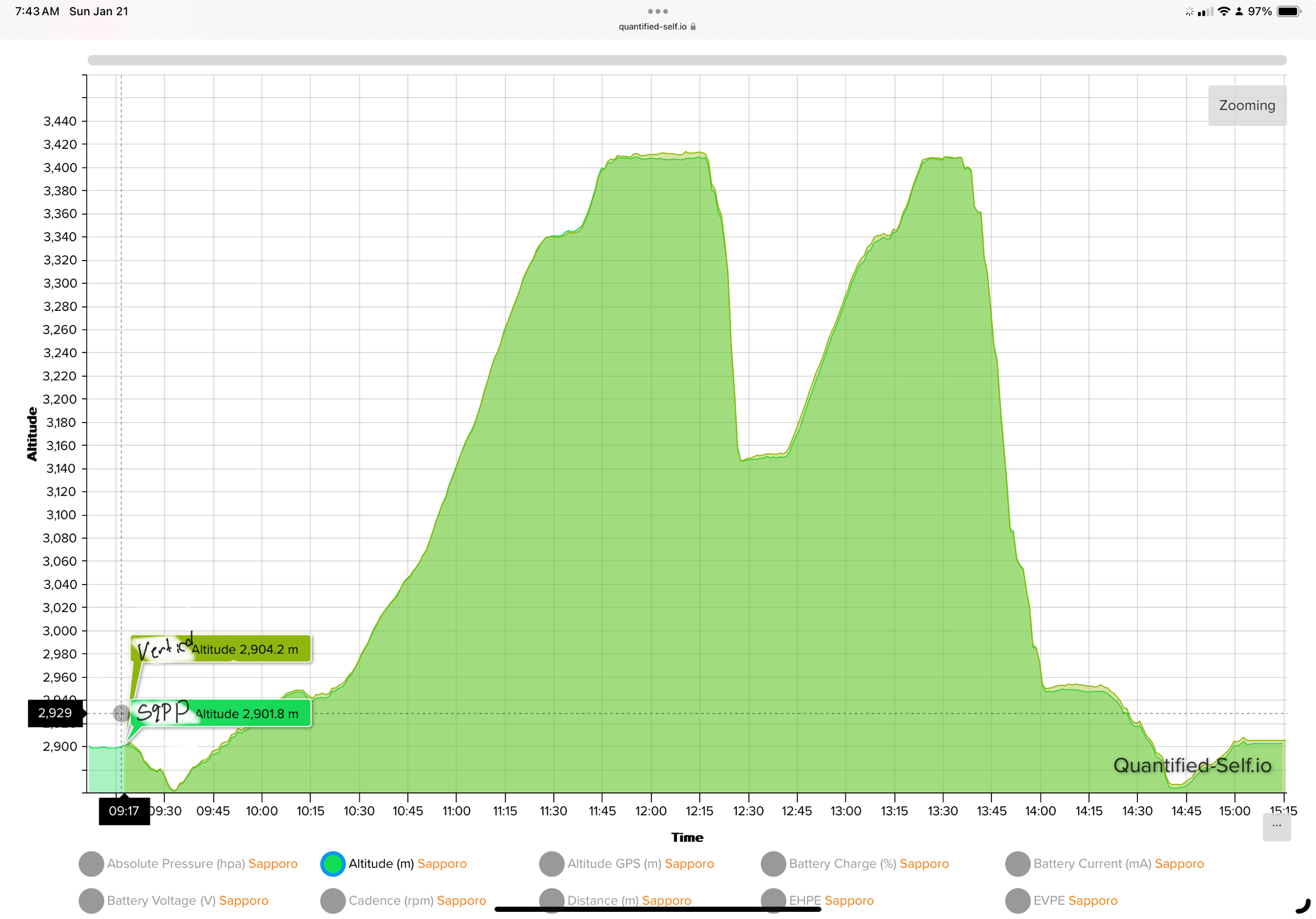How do I fix ascent / descent 20% over-stated?
-
@Brad_Olwin
Thanks for taking a look: https://maps.suunto.com/move/brianyoung280/65a5a7bef87806762d7ef31aTwo partners on route with me. Both measured the day at ~3,800’ elevation gain vs the 4,473 mine showed. Their watches aligned with two different cell phone mapping programs on the 3,800.
Third time this happened in last few weeks. Has always been slightly high but its materially off now and distorting training progress, comparability, etc. Most routes are continuous up and continuous down with little to no up/down traverses that would account for the delta between starting and ending elevation. LMK if need more info. Appreciate any help you can offer.
This is my fifth or sixth Suunto - like the size, battery and functions but need to fix reliability. For ref, HR measurements like others here - all over map. Learned to only trust HR if wearing a strap. Wrist HR to wrist HR compare is prob ok but strap needed for accuracy.
-
@snafflehound This is not an issue with the hardware. I have included a screenshot of your activity with the problem areas circled. You will notice a lot of spikes in the elevation data, these add up to the anomalous elevation gain/loss you may see.
What causes this:- Jacket, skin or something pressing up against the barometric sensor causing a change in air pressure that the sensor reads appropriately.
- High wind hitting the sensor holes directly (less likely I think).
- Water covering the sensor hole and causing erroneous barometric sensor readings.
I have had #1 and #3 happen to me while ski touring. If you place the watch outside the jacket and high enough away from gloves and arm movements (on a forearm) this does not happen to me. I only see #3 when I am literally skiing in a blizzard.
Conclusion: Nothing wrong with the watch or sensor, likely need to move where you are wearing the watch.

-
Thanks for digging in and the insights Brad. Will play around with where the watch is worn. With the band that comes with the watch, tough to put on the outside. My strap end keeps coming loose (little peg comes out of hole) so worried I’ll lose it.
Looking at the watch, the band seems to cover the barometric sensors pretty well so surprised that getting this much interference. Is it less touching and variability in exposure to the air?If I can’t solve this, how do I not use the barometer for altitude and just gps? I can flip it back in warmer months when less clothing, etc impeding the reading.
Brian
-
@snafflehound
it could be worth trying to clean the baro sensor before next session, just in case.
search the forum for more details if needed : just one example https://forum.suunto.com/post/98738 -
please see FAQ #6: https://forum.suunto.com/topic/9960/more-faq
-
@Egika said in How do I fix ascent / descent 20% over-stated?:
please see FAQ #6: https://forum.suunto.com/topic/9960/more-faq
it is effectively more efficient to have unique FAQ answer for so common questions


-
@snafflehound I had this issue in the past work the 9baro. I’d get a strap big enough to go over your jacket. The replacement straps Suunto sell have two sized straps for this.
-
@Audaxjoe
Thanks all. Appreciate your insights. Cleaning watch and will try diff placement this weekend. Will revert here if not improved. Brian -
@snafflehound yesterday SkiMo with S9PP on right wrist under all clothing and Vertical on left wrist on top of jacket. Both recorded accurate altitude and accurate gain/loss.

-
I’m curious, why doesn’t FusedAlti correct @snafflehound ’s altitude issue? At least at the end of the activity? I have had a similar issue ski touring (suspect it is due to interaction with my clothing), but I thought it might get adjusted by FusedAlti.
Also, I assume there is no way to turn off the barometric altitude and just use GPS? How much more accurate is the barometric altitude vs the GPS altitude? Or maybe it depends on many factors…